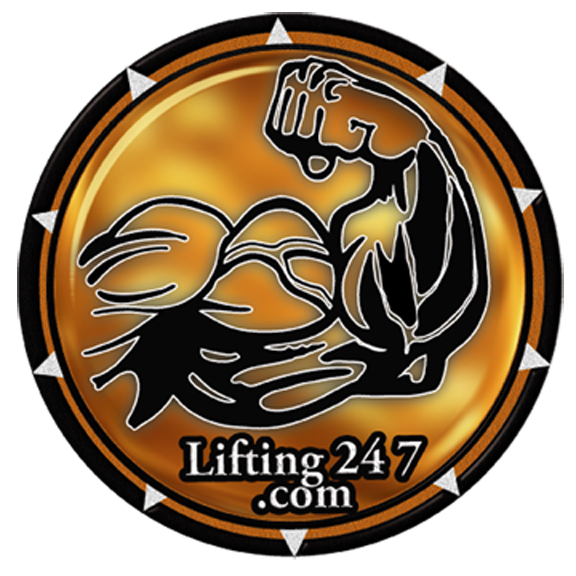Deadlift Barbell, Power Barbell & Olympic Barbell
Choosing the Right Barbell: Deadlift Bar, Power Bar, or Olympic Bar?
Do you truly understand which barbell is best suited for your lifting goals? Are you optimizing your progress with your current barbell? Knowledge is power, especially when it comes to maximizing your strength gains! Selecting between the Deadlift Bar, Power Bar, and Olympic Bar can seem overwhelming. Yet, just like any demanding endeavor, having the appropriate tools can significantly enhance safety and productivity. While barbells are fixtures in commercial gyms and fitness centers, many may not grasp the distinctions between each type of bar. In this article, we'll delve into the unique features and advantages of each barbell variant.
Deadlift Bar, Power Bar & Olympic Bar:
In-Depth Comparison
The deadlift bar has a very different feeling than traditional bars. It is 'whip-less', and the knurling is more aggressive, allowing it to dig into your hands so you can get a good grip of it. The pull off the ground will feel awkward at first because there isn't any whip in the bar, but once you get it moving, you'll love the feel of this bar.
The power bar is considered by many to be just another name for a regular barbell. This is not true at all, though. The power bar was designed to mimic the movements of weightlifters versus traditional bars, where people are trying to work around their weaknesses or limitations of form so they can lift heavier weights. This is why the power bar has more whip and a center knurl. The idea of getting more potent on a power bar would be working on acceleration and speed versus trying to overcome momentum with more weight.
The Olympic bar is slightly different in that the diameter is larger (28mm versus 25mm on a power bar). In addition, the center knurl is more pronounced, and it has strong marks to show you where your 1st and 2nd fingers should be when gripping the bar. When using this for traditional weightlifting, place your fingers here because they lock out on the clean.
Power Bars & Olympic Bars are both made of steel but are of different grades; therefore, they will feel slightly different when lifting. An interesting thing to note is that no matter which bar you pick up, they will all flex differently depending on your form and what movement you're doing. This is a good thing since it means you can swing the bar around according to your needs.
Deadlift Bars are made of molybdenum steel and are milled to have a hammer tone finish. This produces less friction when the plates slide on and off during your lifts. The knurling is more aggressive than other bars, which makes this bar ideal for gripping heavier weights with less effort. I would recommend using chalk while using this bar to achieve the best results.
The Benefits of Each of the Weightlifting Bars
Benefits of Deadlift Bar
#1More comfortable for your wrists– The thicker bar will be more accessible on the wrist, but it comes down to personal preference.
#2 More Aggressive knurling helps get a good grip on the bar without using chalk, which can get messy quickly.
#3 Less whip than power bars- This helps with deadlifting because it doesn't have any whip, making it easier to maintain your form.
#4 No center knurling- For deadlifting, the amount of knurling is perfect for riding up and down your legs without having to reposition.
Benefits of Power Bars
#1 Center knurling helps not repositioning while benching and allows optimum hand placement.
#2 Whip- The bar has a lot of whips in it, which helps with benching or any other lift where you are constantly pressing weight up. It helps by driving the importance towards your chest rather than staying still.
#3 Less aggressive knurling- Ideal for high volume training because the less aggressive knurling will help keep your hands from ripping.
Benefits of Olympic Bars
#1 Center Knurling is ideal for any cleans or snatches with the bar. It helps less experienced lifters maintain their grip on the bar and prevents it from slipping out of their hands.
#2 Less whip- This is good for the Olympic lifts because you never want to be swinging around a bar with a lot of whipped in it since you'll be losing your balance and wasting energy.
#3 More aggressive knurling is good for keeping your hands from ripping on the bench and helps maintain a grip on the bar during presses.
Safety tips when using Deadlift Bar, Power Bar & Olympic Bar
Always use a spotter.
Always have a training partner with you when using the bar to help adjust your grip if needed, especially with the Deadlift Bar since it is highly aggressive on your fingers.
Chalk
When deadlifting, always use chalk on the areas where you will be gripping the bar.
This will help prevent any skin from slipping and causing you to lose your grip.
Wrist wraps
You should always use wrist wraps when using the power bar since it is very stiff and can hurt your wrists if they give way. Always go light until you're used to the weight, then increase as needed.
Start out using the bar with which you are less familiar. This will help you become more comfortable with each one and aid in preventing possible injury or harm to your body.
In Conclusion
It doesn't matter which bar you choose, as long as it gets the job done. The best bars will be those that allow you to have a firm grip on them and provide comfort for your wrists, so they don't give way. If you can afford a power bar, great if not, then a traditional barbell is excellent. So go out there, train hard and have fun!



